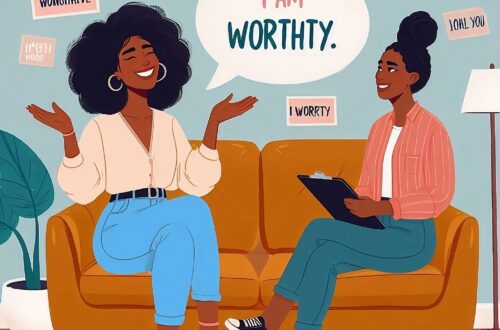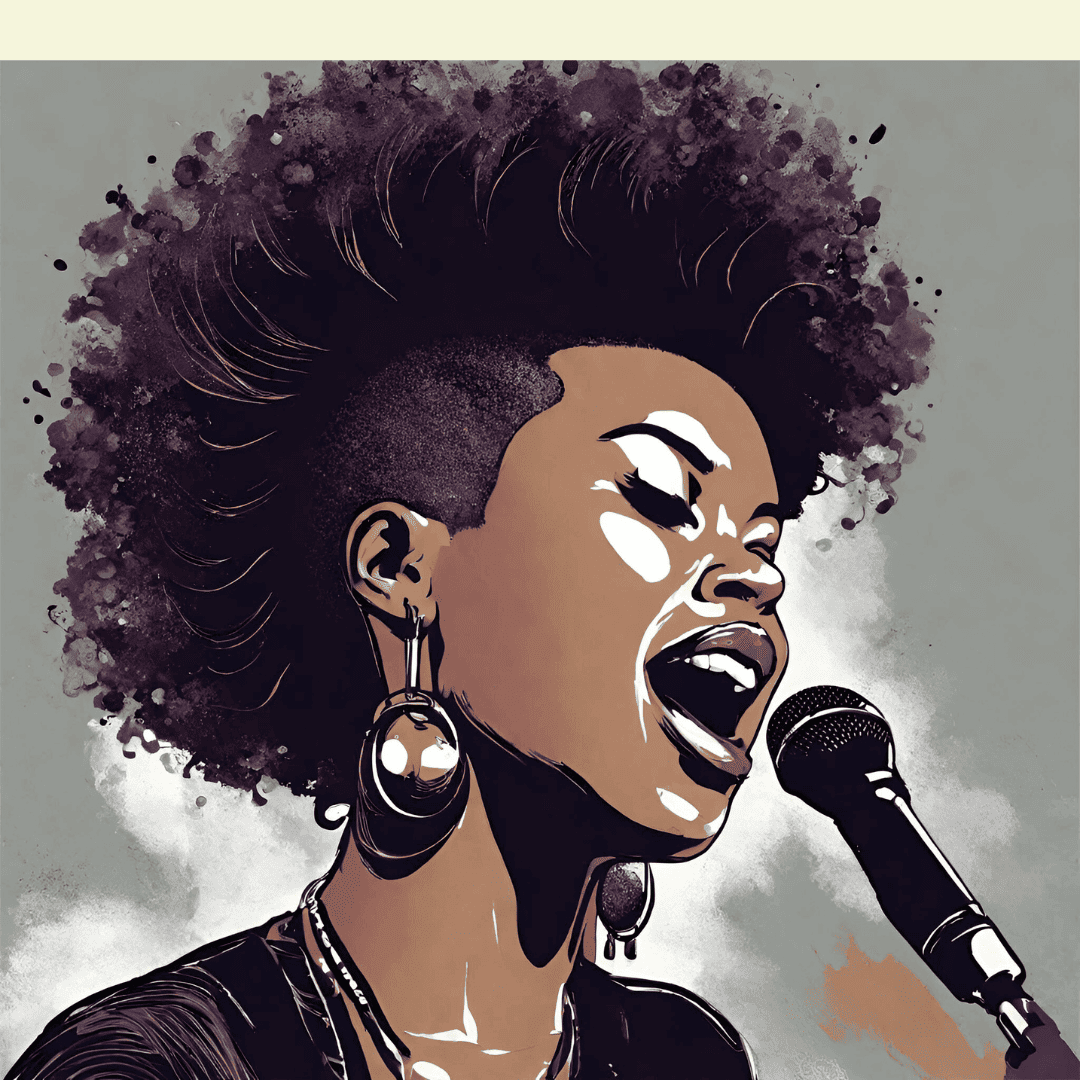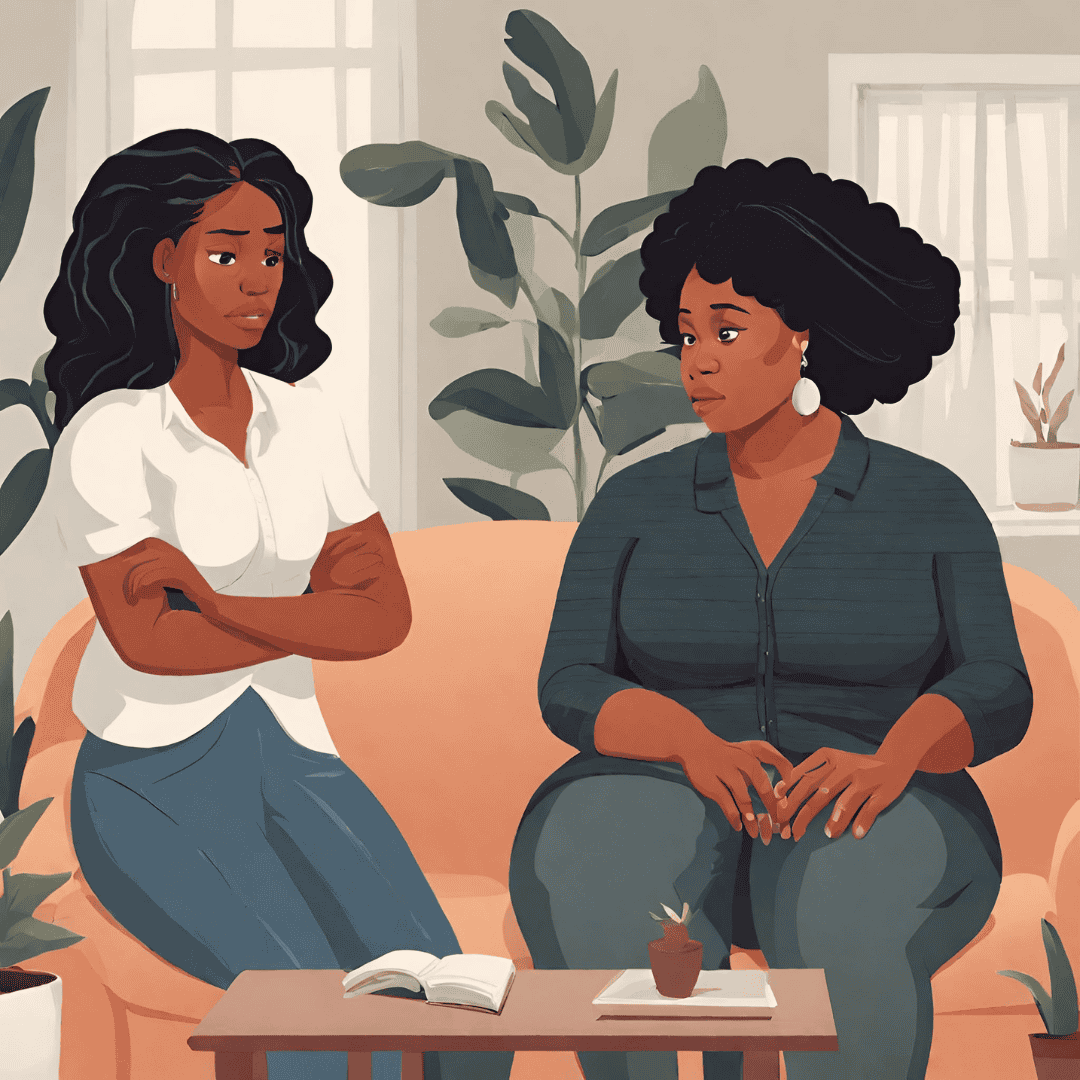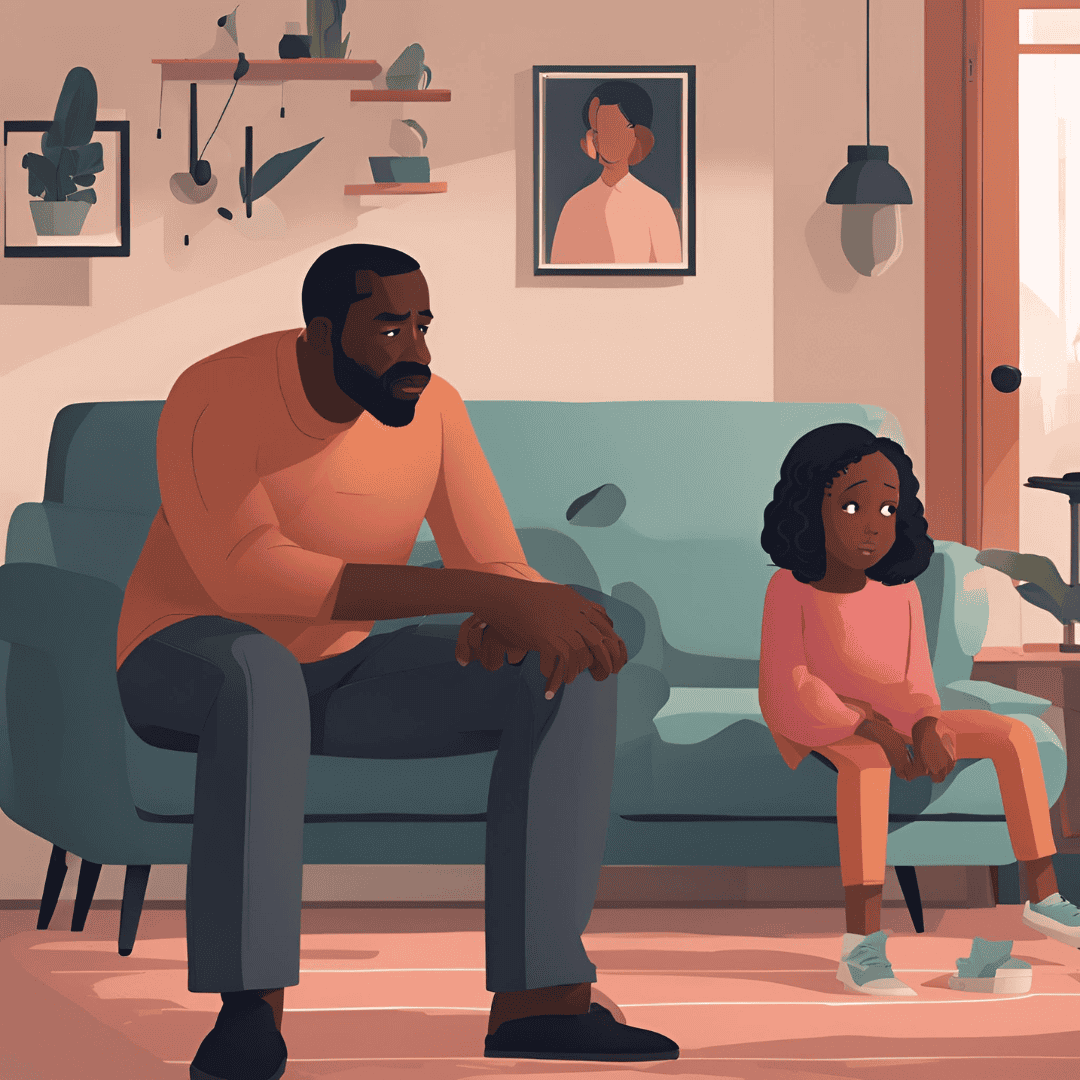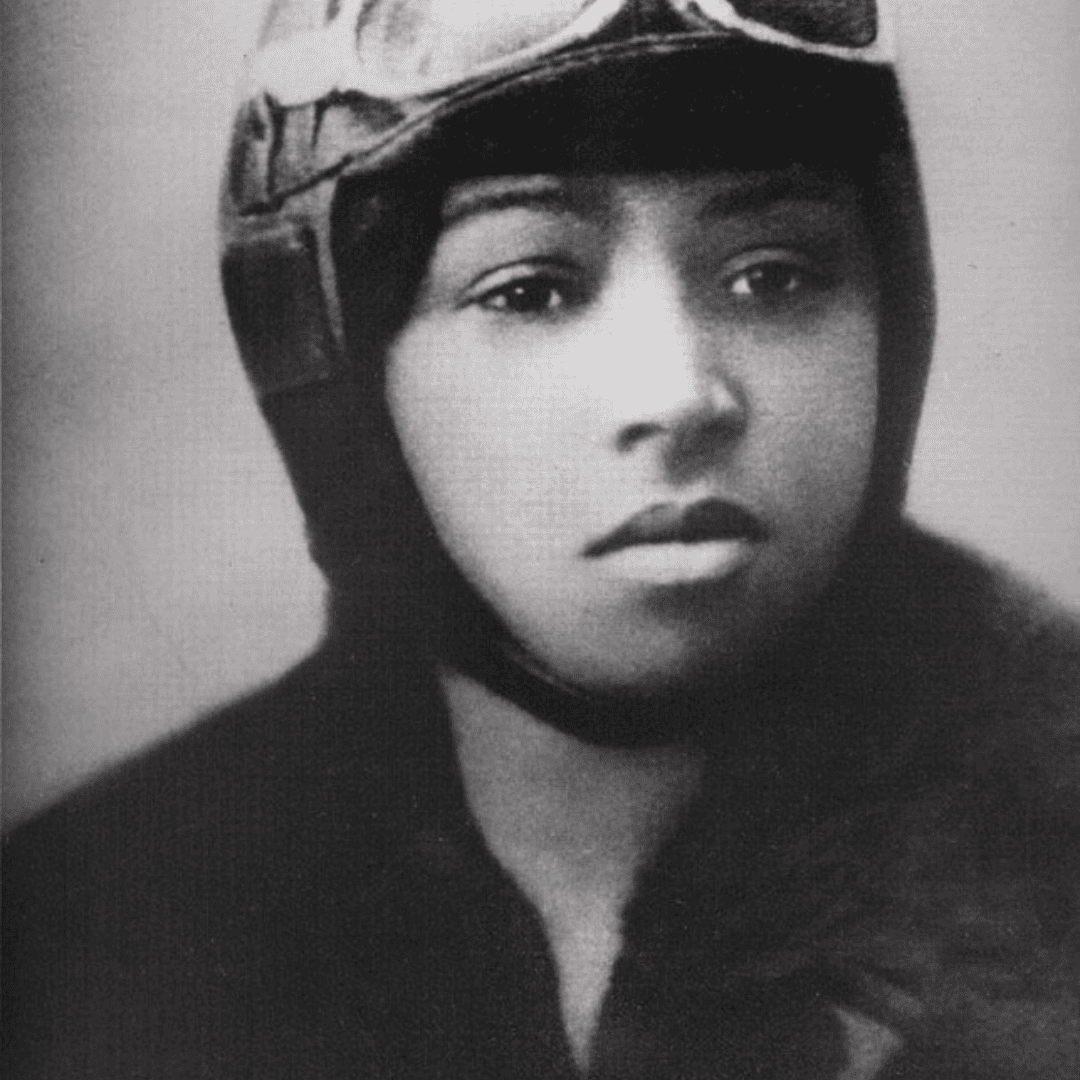-
Rejecting The Strong Black Woman Stereotype: A Deep Dive
Introducing the strong Black woman stereotype
The strong Black woman stereotype suggests that Black women can handle any challenge without support and struggle. This stereotype ignores the real experiences of Black women, placing unrealistic expectations on our shoulders.
Many Black women feel the pressure to fit into the “strong Black woman” stereotype, often sacrificing their own needs and health. This expectation can lead to burnout, isolation and health conditions. Breaking free from this narrative is essential for well-being and healing.
This topic will explore the roots of the strong Black woman stereotype, its impact, and the practical steps of embracing vulnerability and rejecting the stereotype. Discover how to reclaim your identity and prioritise your mental health without the weight of societal expectations.

What is the strong black woman stereotype?
The strong black woman stereotype is the “cultural expectation” that has been passed on to young black girls and women to be strong, caregiving and handle the stresses of life with no support and reciprocation.
We have been socialised to be strong and this has affected the mental and physical health of black women globally.
This is important because cultural expectations are like an imaginary bag on our shoulders, and we are expected to carry the world on our shoulders.
It also impacts our mental and emotional well-being because we have to endure so much and exude strength all the time.
The strong black woman feels like we can’t have a break and take care of ourselves, we can’t be selfish, we can’t vent our frustrations and express our true emotions.
This is important because if we look at the Western beauty standards black women are associated with strength then by default we are not seen as feminine or vulnerable or human meaning that we are not worthy of protection.
In contrast, white women are seen as feminine, soft and beautiful and even though she can be an independent woman, a girl boss or a feminist she will be protected by white men which is understandable because they have made sure that they are protected which makes sense.

An image created by Dall-e 3 shows a black woman meditating with a book saying No. What is the origin of the strong black woman stereotype?
Bell Hooks the black feminist and author stated that the narrative relates to the North American transatlantic slavery where black people had to endure the brutal working conditions of the legal and economic system that made white people rich as a result of free labour.
During the height of slavery, black women had to cope with the physical, mental and sexual abuse and as a result, adapted to be strong as a way of dealing with the brutal reality of living on the plantation.
What does the strong black woman stereotype look like?
An example is the role reversal of some black male and female relationships especially looking at celebrities where you can see that many of these relationships do not benefit black women in any shape or form.
It puts black women in a masculine role and often this can lead to some relationships where the black woman isn’t resting in her femininity. In addition, she is in her masculine energy which adds even more stress to her mental health.
The only positive outcome is for her partner because he doesn’t assume the responsibility of providing and protecting, which can lead to abuse and manipulation. Furthermore, this demonstrates a lack of empathy and concern for black women in the black community.
What is the superwoman schema?
An author named Michele Wallace wrote a book called Black Macho and the Myth of the Superwoman, identifying the term “superwoman.”
Developed by Woods-Giscombe, the superwoman schema illustrates the collective signs that arise when one is socialised to show strength at all costs. It captures a set of beliefs black women share about the reality of being strong.
It is often associated with pride and self-confidence but the strong black woman image has been linked to anxiety and stress.
The 5 dimensions of the superwoman schema include:
- An obligation to remain strong- capable of dealing with all the trials and tribulations by herself.
- Not embracing vulnerability- this myth that being vulnerable shows weakness
- Be motivated to succeed- this shows how focusing your energy to succeed leaves little room for yourself and highlights the sacrifice black women make that makes our health worse.
- To hide your true emotions- this myth is based on the idea that it involves completely hiding your emotions.
- Take care of everyone at the expense of your health- the obligation to take care of everyone else.
The Burden of the Superwoman Image
The strong black woman is embedded in society and it has been associated with negative associations regarding black women such as the Mammy, Sapphire and Jezebel.
Some of us don’t seek professional help because of “the mental health stigma, cultural mistrust and beliefs” that are pervasive in the black community.
Even though more black women are rejecting this narrative, more work needs to be done so that it’s normal for other black millennials, Gen Z and beyond to feel empowered enough to ask for help in the future.
In this article which looks at Afro-Caribbean women in the UK, the analysis section reveals interesting experiences about how black women and men have been raised and how these participants have to carry the burden in their households.
There are plenty of discussions on social media about the dusties and the topic of going 50/50 including the disrespect of black women by these men.
The role reversal doesn’t benefit the black woman even if she doesn’t mind paying 50/50 because she is still going to end up contributing more, especially if she has children with him.
Black women are in a unique position where we have to deal with a large majority of black men who don’t want to be providers and are more interested in being in the feminine position and asking black women to pay 50/50.
What are the consequences of the strong Black woman stereotype?
Psychological distress is a response that happens when someone has a lot of responsibilities to juggle and the overload of burden makes them feel distressed.
This is unhealthy because our bodies need to rest and it’s not okay when black women are not allowed to rest and let go. Even when black women decide not to live by the strong black woman narrative, the concept is too embedded in the black communities.
Other than the lack of concern, there is also the internalised aspect of the narrative such as hiding and masking the pain, overwhelm, stress, anxiety, depression, limiting self-care and not seeking treatment.
Marita Golden wrote The Strong Black Woman, a book that showcases the various experiences and stories of black women in the USA and why this stereotype needs more attention amongst black women in the UK because this has an overall negative impact on the wellness of black women.
Moreover, the book tells readers the reality of taking on this narrative and how these black women decided to seek help, put themselves first, and start healing from this stereotype that doesn’t provide a place for us to rest and rejuvenate.
Even though the stories are based in the USA, it is still important for black women in the UK because many of us have had to take on the burden and other people’s problems.

An image created by Dall-E 3 shows a black woman smiling and shining when she let go of a heavy burden. “Caring for myself is not self-indulgence, it is self-preservation, and that is an act of political
– Audre Lorde
warfare.”How to Let Go of the Strong Black Woman Stereotype
Here are 8 ways to start breaking free from the idea of always having to stay strong:
- Embrace your vulnerability– too often, we worry that being vulnerable makes us look weak, and that is further from the truth. Being vulnerable helps us connect with ourselves and allows black women to express our emotions.
- Schedule time for rest– the strong black woman image doesn’t give Afro-Caribbean women room to rest and this may relate to living in African households where you had to do something. In some African households rest is not prioritised enough and we underestimate the power of rest. ABC talks about how a black artist and poet called Tricia Hershey created the Nap ministry in the USA to help black women hit a pause and take a nap. The nap ministry explores the power of naps through community workshops, nap sessions and lectures.
- Go on solo dates– this has been trending on social media of women taking themselves out on dates. This is a great way to get to know yourself beyond the stereotype. This is another self-care activity to do by yourself and there is nothing wrong with treating yourself.

An image created by DALL-E 3 of a beautiful dark-skinned black woman playing with clay with a bouquet. - Don’t take on people’s problems- there is nothing wrong with helping other people and there is a time and place to say yes. However, Afro-Caribbean women should put themselves first and ensure their needs and wants come first. It’s not every day that black women are reciprocated with the same positive energy from other people.
- Let go of perfectionism– perfectionism is one of those unrealistic concepts that makes you overthink too much and things don’t get done. This is why progress over perfection matters.
- Live the soft life– The soft life was created by Nigerian influencers that allow black women to dream and live the life that is comfortable to them. The soft life is a great lifestyle and movement that helps black women start over and live a life that aligns with their values and goals and focuses on themselves.
- Find a safe space dedicated to prioritising the needs and wellness of black women where you feel seen and supported. Black Ballad is a media company for black women and it has been going on for 10 years.
- Seek help– Gone are the days when black women suffer in silence, with more black female therapists, blogs and organisations dedicated to helping black women.
Final Thoughts
I believe that there is nothing with strength, you need strength to navigate life and to deal with things such as failures and rejections.
However, when it comes to Afro-Caribbean women you can be vulnerable and you can cry and receive, be spoilt; it’s more important now than ever to become soft, to rest in your femininity, to be taken care of and to take care of yourself.
I can be strong when necessary but as a woman, I don’t want to be strong all the time. The aim is to live the slow life that benefits me, to make sure my health is taken care of and my mental health isn’t sacrificed.
I hope you enjoyed reading this post, it was something that I have been dealing with and I wanted to write a topic about this and know that there is a way to heal from this narrative.
Please share this post with other black women who want to reject this narrative and are now focusing more on themselves. Let me know what you think about this topic and suggest other content ideas that can help black women on a healing journey.
-
Tina Bell: The Overlooked And Forgotten Pioneer of Grunge
Disclaimer: This article is written for educational purposes to the best of my knowledge and may contain errors and omissions. I am not a qualified historian or a teacher and this blog may change focus at any time please read this at your own risk.
Introduction
When you think of grunge music, who do you think of? White men in a band such as Nirvana. Even though there are black people in famous indie rock bands such as Skunk Anansi or Bloc Party, grunge tends to be associated with predominantly white men. It ignores other bands that don’t fit into the white male image of rock music.
Who are the Bam Bam?
Did you know that a black woman called Tina Bell was in a rock band called Bam Bam who helped create the subgenre known as grunge by combining punk and heavy metal?
Bam Bam was a grunge rock band that was created in 1983 in Seattle, USA. The band included Tina Bell, the lead singer and songwriter, her husband and guitarist Tommy Martin, the drummer Matt Cameron and the bass guitarist Scotty Ledgerwood.
Cameron left the group in 1984 and formed other bands such as Soundgarden and Pearl Jam and Tom Hendrickson replaced him. Ms Bell was known for her powerful vocals and stage presence that captivated the audience.
Who is Tina Bell?
Tina Bell was born on the 5th February 1957 in Seattle and she was the oldest daughter of 10 children and sang in the Mount Zion Baptist church as a child. She attended Washington State University, studied drama, and then joined the Langston Hughes Performing Arts Institute.
As a student, she was preparing to sing the French rendition of the song C’est Si Bon and needed a French tutor to help with the lyrics. She called Tommy Martin from an advert in the newspaper and Mr Martin and Ms Bell fell in love, they got married and had a son called TJ.
Bam Bam had loyal fans in Seattle and released 1 EP called Villains (Also Wear White), 2 singles called Ground Zero and Show What You Know and 2 albums called Free Fall from Space, and Bam Bam House Demo. They performed at packed gigs and live shows, and they were voted twice for the best Seattle bands and performed at the Metropolis.
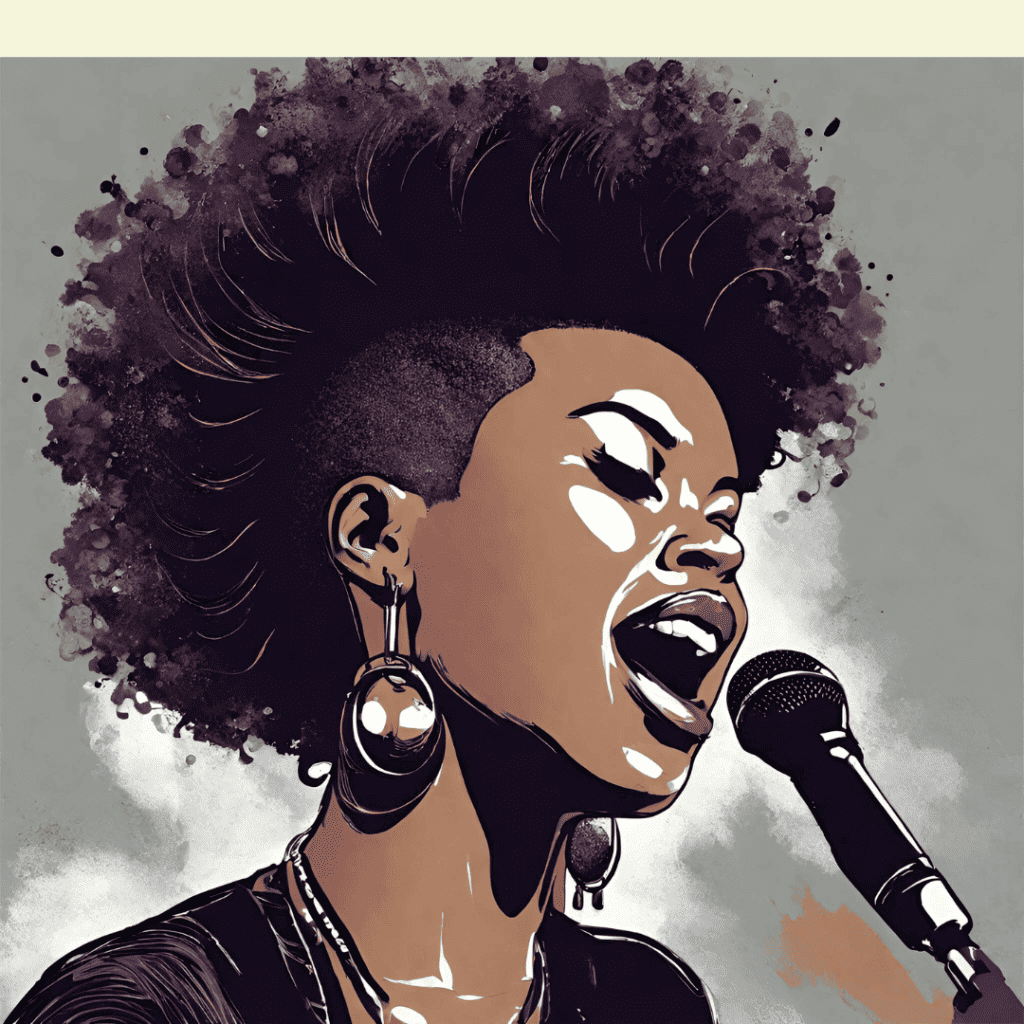
An AI illustration of a black woman with a mohawk using Canva by Afro Lit Stories. What happened to Tina Bell?
According to the Culture Rock Griot interview, Ledgerwood explained that Bam Bam didn’t get the recognition they deserved because of the racism and sexism that contributed to the band being erased from grunge history.
Ledgerwood continued revealing how black women are meant to be portrayed as the “hip-hop, R&B or a soul diva” Since she was the lead singer of a rock band, it didn’t fit into the idea of what a rock band should represent at the time.
In the 1980s, Bam Bam moved to Europe with the aim that living in Europe would give them more opportunities for the band. However, things didn’t go as planned because by the time they left the USA, grunge had already reached the mainstream audience, and living in Europe didn’t advance their careers.
As the writer Jen B. Larson wrote in the article by The Stranger she explains that “audiences were not ready to see an African-American in a rock band.”
The lack of acknowledgement affected the band especially Ms Bell since she helped grunge thrive and erasure is nothing new to black artists who have created and innovated music, only to be forgotten. They returned to the US and Ms Bell left the band in 1990. She divorced Mr Martin in 1996, became depressed and turned to spirituality, religion and astrology.
How did she die?
Ms Bell died on the 10th October 2012 due to cirrhosis and struggled with depression and alcoholism. According to her son TJ Martin, Ms Bell was dead for a couple of weeks and her belongings were thrown out without notifying her family.
Final Thoughts
I hope you enjoyed reading this short blog post. I can imagine how she must have felt leaving the band, knowing how exhausted and frustrated she must have felt not receiving her recognition. The fact that I heard about her a couple of years ago shows that Ms Bell was forgotten and overlooked.
Don’t forget to share this blog post with other black women interested in knowing more about black women’s experiences and stories in society. And let me know what you think about this blog post in the comments.
-
The Life and Legacy of Bessie Coleman
Disclaimer: This article is based on Bessie Coleman for educational purposes. The information about this topic is true and accurate to the best of my knowledge, but there may be omissions. I am not a qualified historian or teacher and should remind readers to read at their own risk. I reserve the right to change how I run and manage this blog and may change focus at any time.
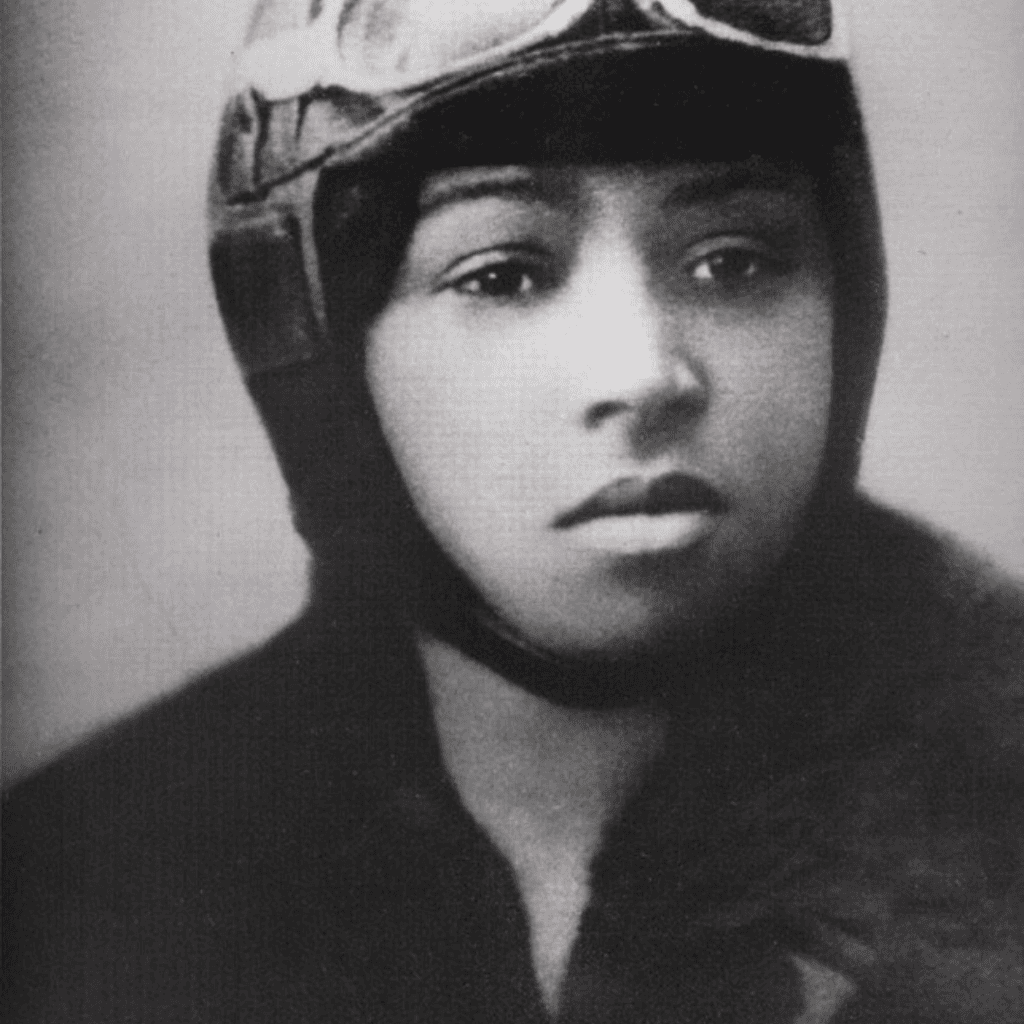
Bessie Coleman wears her pilot uniform. A photo from the Everett Collection in Canva. This is an inspirational story featuring Bessie Coleman, a black Native American pilot who broke the racial and gender barriers by achieving her goal of becoming the first black female pilot in 1921 in France. It has been 102 years since she received her licence and influenced black people to kickstart their careers in aviation.
Who is Bessie Coleman?
Bessie Coleman was born and raised in Texas on the 26th January, 1892 and grew up in a large family. Coleman was a bright student who excelled in Maths and helped her mother pick cotton since her parents were sharecroppers and washed laundry to earn income.
She studied at the Oklahoma Colored Agricultural and Normal University (now Langston) but she had to leave because of financial difficulties.
What did Bessie Coleman do for a living?
When she was 23, she moved to Chicago to live with her older brother and secured a job as a manicurist at a barbershop after completing her education at the Burnham School of Beauty Culture.
While she was working, her brother John Coleman came into the barbershop, who wasn’t fully sober teased her saying that French women were more liberated and were allowed to fly aeroplanes and he was right. It was in the barbershop that she decided to become a pilot.
How did she become a renowned pilot?
While living in Chicago, she made connections and befriended prominent black entrepreneurs such as Richard Abbott, a businessman and publisher of the Chicago Defender newspaper. Also, Jesse Binga, an entrepreneur who owned a bank and both businessmen played an essential role in ensuring she achieved her goal.
She applied for aviation schools in the USA and got rejected because of her race and gender, however, that didn’t stop her from learning how to fly.
It was Mr.Abbott who suggested that she should apply for a flight school in France since they were “less sexist and racist” and were more accepting of teaching and training French women to become pilots.
In the meantime, she applied for schools in France, switched jobs to become the manager of a restaurant to save money and took French lessons that were paid for by Jesse Binga.
A flight school called the Caudron Brothers School of Aviation in Le Crotoy in France accepted her application and she left in November 1920. She spent 7 months training as a pilot and was awarded the international licence by the Federation Aero Nautique Internationale in June 1921.
The air is the only place free from prejudices
-Bessie ColemanWhat happened after she became a pilot?
When she returned to America, she became a celebrity in the black community and became a stunt pilot. She returned to Europe to gain more experience and visited countries such as France, Netherlands and Germany before returning to America.
It was during this time that she became known as Queen Bess and became famous for barnstorming such as looping the loops and parachuting off the plane. Also, she toured the country and gave lectures to the black community.
How did she die?
She was rehearsing for an airshow in Florida and took her last flight with a mechanic called William Wills who was flying the Aeroplane.
According to the Independent, she was preparing to parachute off the plane when a wrench got caught in the engine and she was thrown out of the plane and didn’t survive the fall.
The mechanic didn’t survive the crash either as he lost control of the plane. She was only 34 years old and her ambition was to open a flight school so that black people could take flight lessons.
Over 5,000 people attended her funeral as they paid their last respects to the pioneering pilot. It was the journalist and activist Ida B. Wells who delivered her eulogy at the funeral.
Remembering Bessie Coleman
In 1929, William J. Powell, a black pilot started a flight school and called it Bessie Coleman Aviators Club in her honour. In 1977, black women started an aviation organisation called Bessie Coleman Aviators. It is important to not let race get in the way of your ambition.
I hope you enjoyed reading this article because I read a book about her and even though I have heard of her, I was inspired by her story and that she was passionate and determined to achieve her goals.
Let me know what you think of the blog post in the comments below, I appreciate the feedback and want to make sure that the content is intriguing. Don’t forget to share this blog post with other black women who are fascinated by black history and thank you for reading.
Reference
eBook: Bessie Coleman- First Female African-American and Native American Pilot by Cathleen Small.
Afro Lit Stories


Healing through storytelling, elevating black millenial women, one mindset shift at a time


